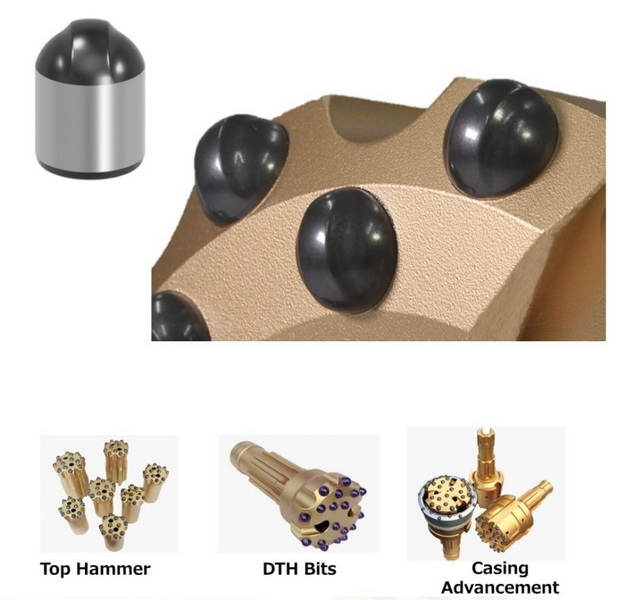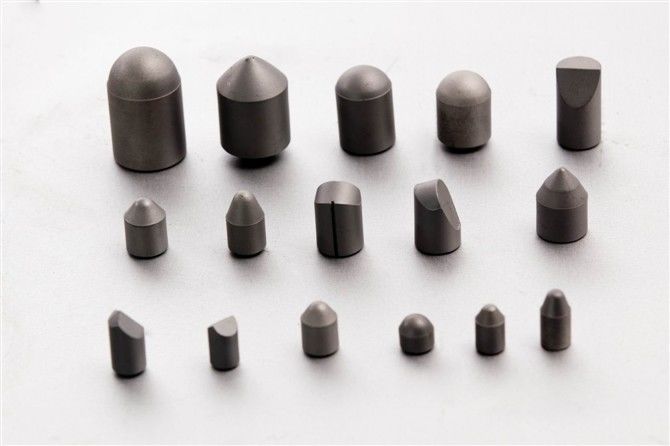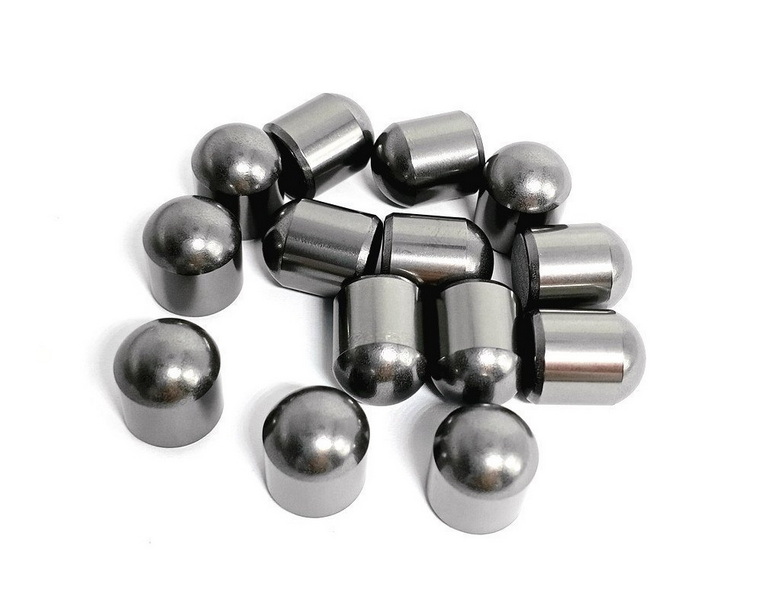Content Menu
● Introduction to Carbide Materials
>> Tungsten Carbide in Mining Tools
● Role of Tungsten Carbide in Mining
● Innovations in Carbide Materials
>> Cobalt-Free Cemented Carbide Tools
● Union Carbide Productions and Related Technologies
>> Historical Context of Union Carbide
● Advancements in Mining Technology
>> Autonomous Mining Systems
>> Environmental Impact Reduction
● Future Developments in Carbide Materials
>> Nanomaterials and Carbide Composites
>> 3D Printing of Carbide Parts
● Conclusion
● Frequently Asked Questions
>> 1. What are the primary benefits of using tungsten carbide in mining tools?
>> 2. How does the COFREE project impact the mining industry?
>> 3. What role did Union Carbide play in industrial materials production?
>> 4. How do cobalt-free tools compare to traditional tungsten carbide tools?
>> 5. What are some common applications of tungsten carbide beyond mining?
● Citations:
Union Carbide Productions, while historically known for its diverse industrial activities, has not directly been associated with the development of mining tools. However, the broader context of carbide materials and their applications in mining tools is crucial for understanding how such technologies enhance performance. This article will explore how carbide materials, particularly tungsten carbide, improve mining tool performance and discuss related innovations in the industry.

Introduction to Carbide Materials
Carbide materials, such as tungsten carbide, are renowned for their exceptional hardness and wear resistance. These properties make them ideal for applications in mining, where tools must withstand harsh environments and abrasive materials. The use of carbide materials in mining tools has significantly improved operational efficiency and reduced maintenance costs.
Tungsten Carbide in Mining Tools
Tungsten carbide is widely used in mining tools due to its ability to maintain structural integrity under extreme conditions. It is often used in drill bits, picks, and other equipment that require high durability and resistance to wear. The integration of tungsten carbide into mining tools has revolutionized the industry by extending tool life and enhancing drilling speeds.
Role of Tungsten Carbide in Mining
Tungsten carbide plays a pivotal role in mining by enhancing tool performance in several key areas:
1. Blasthole Drilling: Tungsten carbide inserts are used in drill bits to improve drilling efficiency and reduce wear on the tools. This results in faster drilling operations and lower maintenance costs.
2. Haul Road Maintenance: Long-life tungsten carbide picks are used for road maintenance, reducing operational costs and improving safety by minimizing the need for frequent tool replacements.
3. Bulk Handling: Tungsten carbide conveyor scraper blades are used to maintain conveyor belt cleanliness, reducing downtime and improving productivity by ensuring continuous material flow.
4. Mineral Processing: Tungsten carbide parts are used in crushing and milling operations to access minerals efficiently. The high wear resistance of these parts ensures consistent performance over extended periods.
Innovations in Carbide Materials
Recent innovations have focused on developing cobalt-free alternatives to traditional tungsten carbide tools. Projects like the COFREE initiative aim to reduce dependence on cobalt, which is increasingly recognized as a health hazard and faces supply chain challenges.
Cobalt-Free Cemented Carbide Tools
Epiroc and Sandvik Coromant are among the companies working on cobalt-free cemented carbide tools. These tools maintain high wear resistance without the use of cobalt, ensuring sustainability and safety in mining operations. The elimination of cobalt also addresses ethical concerns related to its sourcing.
Union Carbide Productions and Related Technologies
While Union Carbide Productions itself is not directly involved in mining tool development, the broader context of carbide materials highlights the importance of these technologies in enhancing tool performance. Union Carbide's historical involvement in industrial materials and processes underscores the significance of carbide materials in various sectors.
Historical Context of Union Carbide
Union Carbide was a major player in the production of carbon products, including graphite, which is used in various industrial applications. Although not directly related to mining tools, their expertise in carbon-based materials reflects the broader relevance of carbide technologies. The company's legacy in industrial innovation contributes to the understanding of how carbide materials can be optimized for different applications.

Advancements in Mining Technology
The mining industry has seen significant advancements in technology, with a focus on sustainability and efficiency. The integration of carbide materials into mining tools is part of a broader trend towards more durable and environmentally friendly operations.
Autonomous Mining Systems
Autonomous mining systems are being developed to enhance safety and efficiency. These systems often rely on advanced materials like tungsten carbide for their components, ensuring reliability in harsh environments.
Environmental Impact Reduction
Efforts to reduce the environmental impact of mining include the use of more efficient tools and machinery. Carbide materials play a crucial role in this by extending tool life and reducing waste.
Future Developments in Carbide Materials
Future developments in carbide materials are expected to focus on sustainability and performance. Researchers are exploring new compositions and manufacturing techniques to enhance the properties of carbide materials further.
Nanomaterials and Carbide Composites
The integration of nanomaterials into carbide composites is being explored for enhanced mechanical properties. These advancements could lead to even more durable mining tools with improved performance.
3D Printing of Carbide Parts
3D printing technology is being applied to produce complex carbide parts with precise geometries. This could revolutionize the manufacturing process for mining tools by allowing for customized designs and rapid production.
Conclusion
In conclusion, while Union Carbide Productions is not directly involved in improving mining tool performance, the advancements in carbide materials, particularly tungsten carbide, have significantly enhanced the efficiency and durability of mining tools. Innovations in cobalt-free alternatives further ensure sustainability and safety in the mining industry. As technology continues to evolve, the role of carbide materials will remain crucial in driving advancements in mining operations.

Frequently Asked Questions
1. What are the primary benefits of using tungsten carbide in mining tools?
Tungsten carbide offers high hardness, wear resistance, and corrosion resistance, making it ideal for harsh mining environments.
2. How does the COFREE project impact the mining industry?
The COFREE project aims to develop cobalt-free cemented carbide tools, reducing health risks and supply chain uncertainties associated with cobalt.
3. What role did Union Carbide play in industrial materials production?
Union Carbide was a significant producer of carbon products, including graphite, which is used in various industrial applications.
4. How do cobalt-free tools compare to traditional tungsten carbide tools?
Cobalt-free tools maintain similar wear resistance without the health and supply risks associated with cobalt, ensuring sustainability and safety.
5. What are some common applications of tungsten carbide beyond mining?
Tungsten carbide is used in cutting tools, mold materials, and wear-resistant parts across industries like aerospace, medical, and automotive.
Citations:
[1] https://eit.europa.eu/news-events/news/eit-rawmaterials-cobalt-free-solutions-cemented-carbide-tools-and-their-production
[2] https://www.uniontool.co.jp/en/product/endmill/
[3] https://www.bellucklaw.com/new-york-asbestos-companies/union-carbide/
[4] https://www.linkedin.com/pulse/role-tungsten-carbide-mining-tool-shijin-lei
[5] https://www.durit.com/industries
[6] https://www.carbide-products.com/blog/tungsten-carbide-for-weapon-industry/
[7] https://swcenter.fortlewis.edu/finding_aids/inventory/UMETCO.htm
[8] https://patents.google.com/patent/EP3004518A2/en
[9] https://www.scmtstool.com/blog/What-Are-the-Industrial-Applications-of_bid-316545588.html
[10] https://www.uniontool.co.jp/en/product/endmill/technical_info/faq.html
[11] https://www.carbide-products.com/blog/applications-of-carbide/
[12] https://eurobalt.net/blog/2020/03/23/tungsten-carbide-components-for-drilling-and-mining-equipment/
[13] https://www.osti.gov/servlets/purl/5963405
[14] https://www.chemeurope.com/en/encyclopedia/Union_Carbide.html
[15] https://www-pub.iaea.org/MTCD/Publications/PDF/trs359_web.pdf
[16] https://picryl.com/topics/union+carbide
[17] https://www.mywvhome.com/fifties/carbide.html
[18] https://www.dreamstime.com/photos-images/carbide.html
[19] https://www.alamy.com/stock-photo/carbide.html
[20] https://digital.lib.ecu.edu/6091
[21] https://www.allied-material.co.jp/en/techinfo/tungsten_carbide/use.html
[22] https://www.defence-industries.com/articles/carbide-dies-and-military-applications
[23] https://www.sumitool.com/en/products/carbide-materials/
[24] https://www.linkedin.com/pulse/hard-truth-tungsten-carbide-military-applications-less-ethan-clarke-wrk4e
[25] https://www.bhopal.com/document/browning.pdf
[26] https://dl.acm.org/doi/fullHtml/10.1145/1151030.1151032
[27] https://www.uniontool.co.jp/en/product/endmill/series.html
[28] https://www.si.edu/object/SILNMAHTL_25564
[29] https://en.wikipedia.org/wiki/Union_Carbide
[30] https://californiarevealed.org/do/2ac68eba-7750-4f77-8a39-fc6c87891126
[31] https://plastiquarian.com/?page_id=14284
[32] https://www.istockphoto.com/photos/carbide
[33] https://www.alamy.com/stock-photo/union-carbide-corporation.html
[34] https://www.shutterstock.com/search/union-carbide
[35] https://www.shutterstock.com/search/union-carbide-building
[36] https://digital.lib.ecu.edu/7216
[37] https://www.mesothelioma.com/asbestos-exposure/companies/union-carbide/
[38] https://casetext.com/case/union-carbide-corp-v-commissioner-of-internal-revenue
[39] https://www.chandlermcnulty.com/union-carbide-corporation-a-legacy-of-mesothelioma-and-asbestos/
[40] https://info.ornl.gov/sites/publications/Files/Pub57659.pdf
















